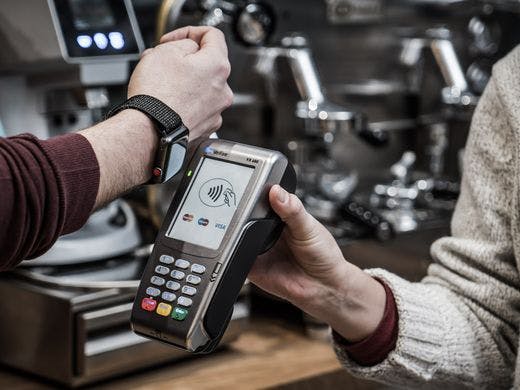Following a year of rapid acceleration in digital adoption, to coin a Bezos phrase, many brands and retailers are looking at how, using technology, they turn cost centres into profit centres, a phrase and a trend we love at True. Following consumers’ increasing willingness to try new and varied technologies, one area that has experienced notable innovation is in the largely, until recently, ignored area of digital payment methods. These technologies are turning good payment experiences into a competitive advantage like never before.
E-commerce merchants are planning to expand their offerings to meet the rising demand for options such as buy now pay later, biometric payments, open banking and cryptocurrencies. Merchants view this as a key tool for broadening the customer demographics for brands whilst also further personalising the experience, a service now expected and demanded by consumers. To demonstrate this fact:
• During 2020, 50% of consumers used a digital wallet
• 11% of consumers used biometrics at least once and surprisingly quickly
• 5% used a form of cryptocurrency to pay for retail products.
Interestingly, currently 25% of retailers and brands offer crypto payment options but this is expected to increase to 49% in the next 18 months, highlighting the significant structural change driven by consumer behaviour. For many executives, crypto as currency is seen as an important marketing tool, a smart way to increase speed and security of payments and a long-term path to the democratisation of finance. Others see it as a systemic risk to finance that needs regulating.
The benefit for both sides of these technologies is clear, for example the rise of buy now pay later. Capital Economics recently calculated that the consumers saved £76m in interest and fees by using buy now pay later schemes. From a retailer perspective, Klarna recently reported a 30% increase in checkout conversion rates and a 58% higher basket size for its merchants which is a monumental step change economically for online businesses given the marketing cost is already sunk. Furthermore, competitor, Afterpay has reported an 8-18% decline in returns and refunds which would compound the economic benefit. There are of course certain questions morally as to whether this is just another predatory financing package that plays on the weaker and more vulnerable in society, an argument not without merit and it is safe to expect some form of increased regulation in this area before long.
Looking forwards, the number of digital wallet users is expected to increase from 2.3bn in 2019 to 4bn in 2024, half the world’s population. 70% of consumers use their smartphone to make payments, either through digital wallets or app/mobile browser payments citing ease, convenience and speed, core elements of the value proposition. In terms of plotting direction, the east has largely outdone the west. Driven by Alipay and WeChat, 85% of consumers in China used QR codes to pay in 2020 up 6 percentage points in a year. In 2019, around 1,000 convenience stores installed a facial recognition payment system and more than 100m Chinese consumers registered to use the technology. Finally social frictionless commerce through live streaming is becoming a core marketing channel where conversion rates and basket sizes are higher with payment completely seamless. True’s investment into Buywith, an Israeli live streaming social commerce platform is an early example of this new marketing and payment channel.
Overall the whole area of payments is attracting significant early-stage investment into new technology that is driving extensive innovation. This is a trend that will only continue as consumers demand ever more seamless experiences, both on- and offline, and presents an opportunity for retailers to fundamentally re-think their payments strategy. The winners will be those who shift from payments being a necessary afterthought towards integrating it as a critical component of the end-to-end experience offered to their shoppers.
